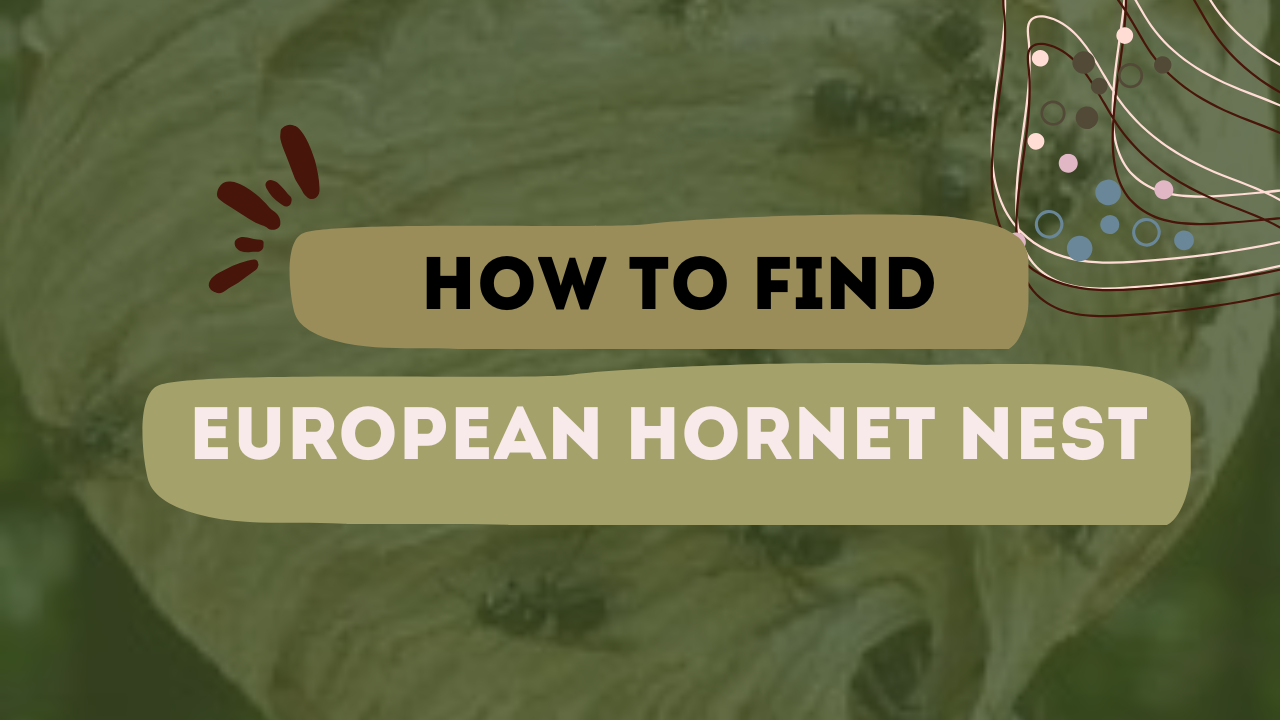So you’ve seen some big scary hornets flying around and you’re pretty sure they’re European hornets. Not the little guys — we’re talking about the large, loud ones that look like they mean business.
Before you panic, breathe. Most hornets won’t bother you unless you mess with their home. But if you want to find the nest (so you can stay far away or deal with it safely), here’s how to do it the smart way.
Table of Contents
What Is a European Hornet?
European hornets are bigger than regular wasps and honeybees. They’re yellow and brown, can be over an inch long, and fly mostly at night or early morning. They also make a loud buzzing sound — so yeah, kinda hard to miss.
They usually build paper-like nests made from chewed wood and saliva. These nests can get pretty big and are often hidden.
Where Do European Hornets Build Their Nests?
Here’s where you’re most likely to find a European hornet nest:
- Inside hollow trees
- In wall voids or attics
- Inside barns, sheds, or garages
- Under roof eaves
- Inside abandoned birdhouses
- Behind shutters or loose siding
They like dark, quiet spots that are protected from wind and rain. So don’t expect to see the nest just sitting out in the open like a regular wasp nest.
Signs There’s a Nest Nearby
You don’t have to see the nest right away to know one’s nearby. Watch for these signs:
- Increased hornet activity around one part of your yard or house
- Hornets flying in the same direction repeatedly (they’re going to or from the nest)
- Buzzing sounds inside walls or near your attic
- Hornets showing up at night, especially near lights
- Finding hornets indoors (they may be nesting in the walls)
If you see hornets entering a small hole in your house or a tree, that’s a major clue. That’s probably the entrance to the nest.
How To Safely Find a European Hornet Nest
If you really want to locate the nest, do it carefully. These hornets can sting multiple times and will defend their home hard.
Step 1: Observe From a Distance
Stand in a safe spot and watch the hornets’ flight path. Most of them follow the same route in and out of the nest.
Use binoculars if you have them, or record a video to slow down later.
Step 2: Track Where They Go
Once you have an idea of their direction, check that area during the day. Look under eaves, around trees, or any cracks in walls.
Don’t poke around directly. Just look, listen, and note where you see activity.
Step 3: Check Around Dusk or Dawn
Hornets are most active early in the morning and around sunset. This is when you’ll see them flying in and out of the nest entrance.
Don’t get close — just observe.
Step 4: Listen for Buzzing
If the nest is in a wall or attic, you might hear faint buzzing. Put your ear near the wall (carefully) and listen. If you hear movement or humming, the nest may be hidden inside.
What NOT To Do
- Don’t go poking or banging near suspected nest areas
- Don’t spray water or chemicals unless you’re trained
- Don’t try to seal the entrance if hornets are inside
- Don’t investigate alone if you’re allergic to stings
This isn’t the kind of DIY that ends well without experience. European hornets get aggressive fast if they feel threatened.
When To Call A Pro
If you find the nest and it’s close to your house, call a pest control expert. Especially if it’s inside a wall or attic — that’s not something you want to handle solo.
Professionals have the gear and protective suits to deal with hornets safely. It’s way better than getting stung five times and then Googling “how to treat hornet venom.”
Final Thoughts
Finding a European hornet nest takes patience and caution. These insects aren’t out to get you, but they will defend their space if you get too close.
Watch for patterns, track where they go, and keep your distance. Once you spot the nest, decide if it’s a safety risk — and if it is, get help.
Better to be safe than stung.

